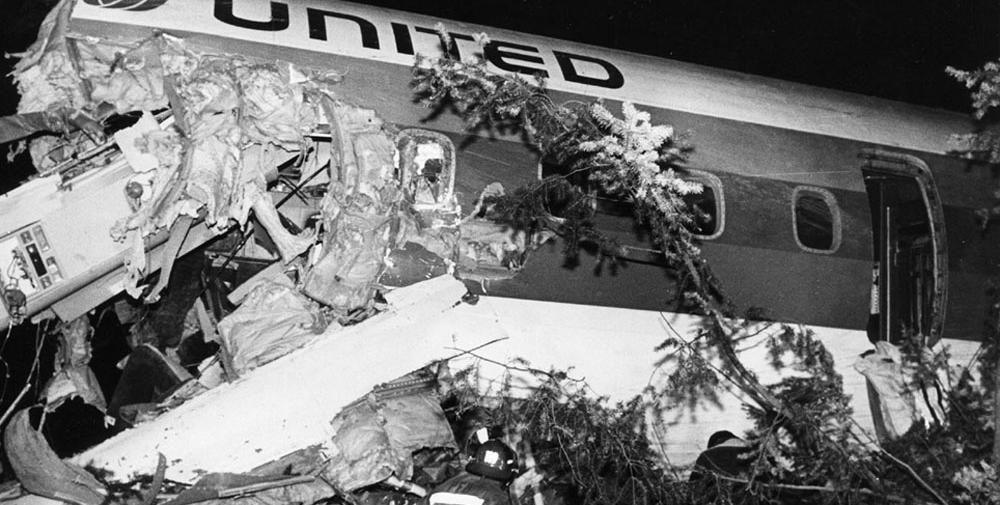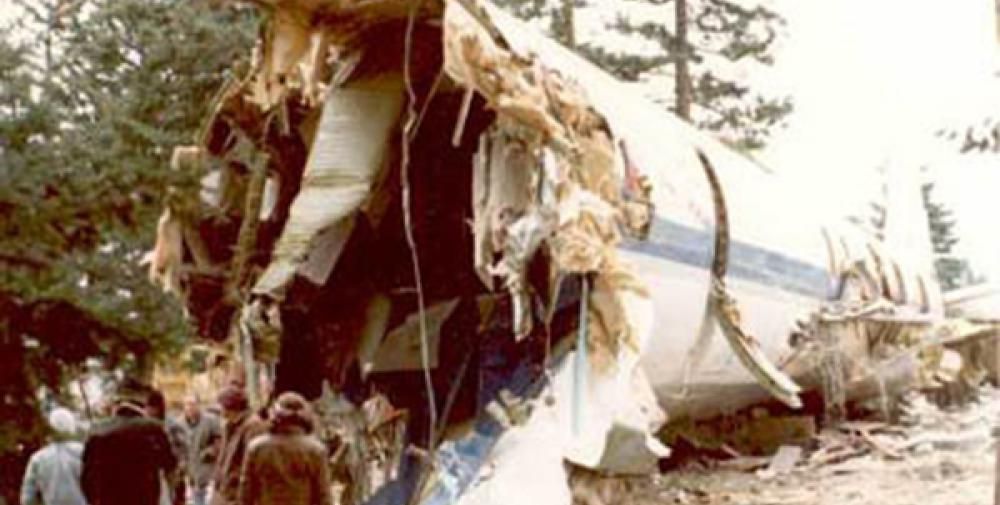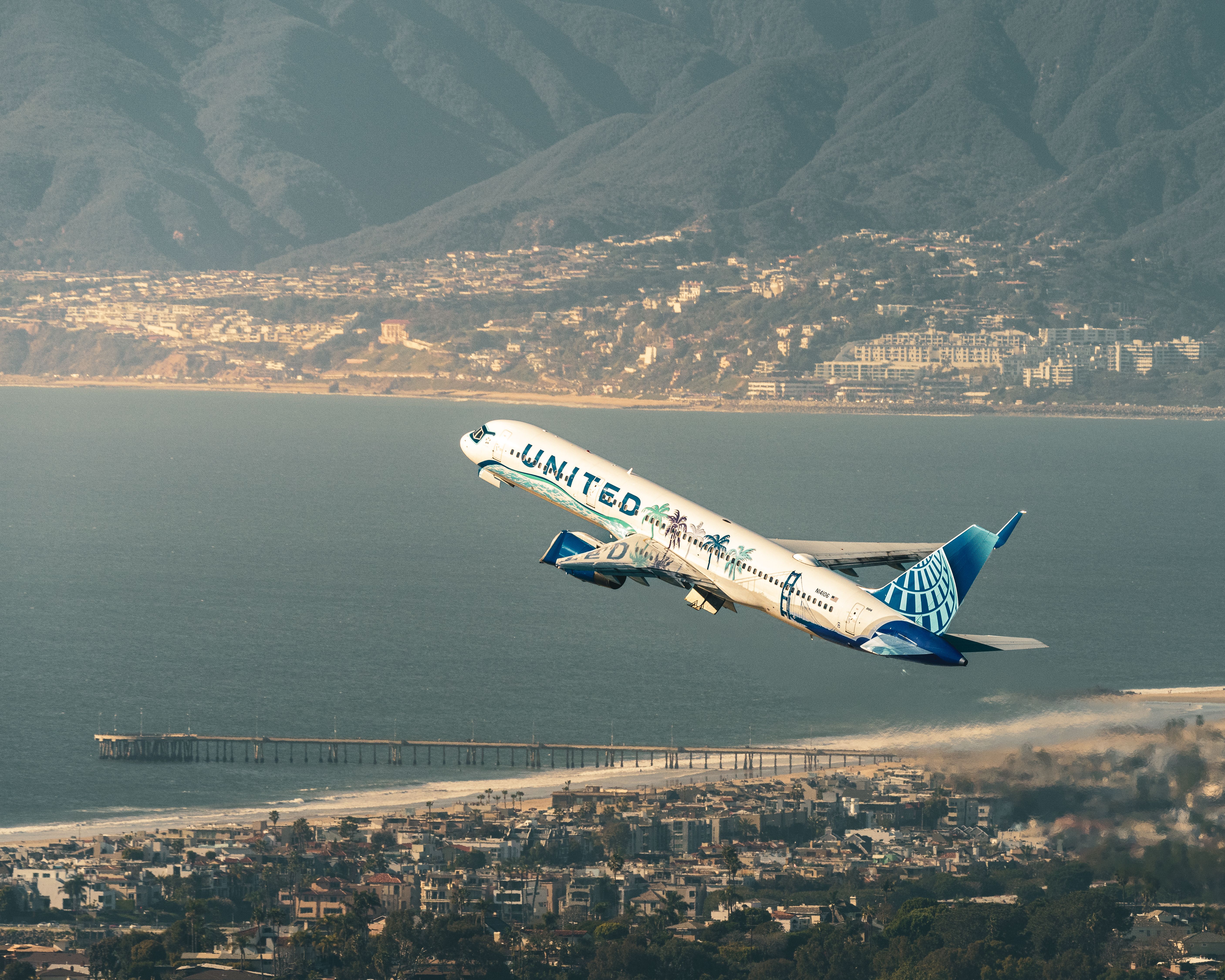United Airlines Flight 173 was a flight from John F. Kennedy International Airport in New York to Portland, Oregon via Denver, Colorado. It was the 28th December 1978 and there were 181 passengers and 8 crew onboard the McDonnell Douglas DC-8. The flight departed Denver without issue at 15:47. The estimated flight time was two hours and twenty-six minutes. Many people were traveling at the end of the Christmas holiday and going back home. The flight had been uneventful thus far but no one could ever have believed what was about to happen.
The crew
The captain was Malburn 'Buddy' McBroom, the first officer was Roderick 'Rod' Beebe assisted by flight engineer Forrest 'Frosty' Mendenhall, who was also a good friend of the captain. In the cabin was lead flight attendant Joan Wheeler and her team of flight attendants, Nancy King, Sandy Bass, Martha Fralick, and Diane Woods.
Get the latest aviation news straight to your inbox: Sign up for our newsletters today!
The issue
The flight crew lowered the landing gear on approach and there was a vibration and loud noise. The flight attendants also heard it and felt a jolt in the cabin. There was also no indicator light in the cockpit to show that it had fully lowered. The first officer requested a holding pattern to try and troubleshoot the problem.
They stayed there for an hour, planning an emergency landing in Portland. The passengers could see the lights of Portland below them. Joan went into the cockpit, and the captain briefed her. He told her that they were running some checks and that he would let her know his intention.
What had happened
The right main landing gear retract cylinder assembly failed due to corrosion. Although the landing gear was down and locked, the free fall of the landing gear damaged the switch. It cut the circuit that shows the green light indicating that the landing gear is locked and down. The gear was, in fact, down, and flaps set at 15, which led to an increased rate of fuel burn. The flight crew had neglected to monitor fuel levels, and the plan to diagnose and prepare for an emergency landing had stopped them, seeing that they were running out of fuel.
Emergency briefing
Joan went back to the cockpit at 17:44, and the captain informed her that they should prepare for an emergency landing in Portland. They talked about preparing the passengers, the landing procedure, and evacuation. He did not mention a time or ask her how long she needed to prepare the cabin. He assumed 10–15 minutes would be enough.
Preparing for an emergency landing
Joan, Nancy, Sandy, Martha, and Diane told the passengers how to brace and how to unfasten their seatbelts. They chose ABPs to sit near the exit rows and briefed them on how to open the exits slide down the wings and help passengers down. An off-duty pilot was put at the rear of the aircraft. The flight attendants stowed any loose objects and started to secure the cabin.
They asked passengers to remove any sharp items like glasses or high-heeled shoes or anything that could injure themselves or puncture the slide. Pillows and blankets were given out for impact protection. Babies were placed on the floor, next to the bulkhead or cabin divider. The passengers responded well to the flight attendants' instructions. They all hoped they would land normally.
"We ordered them to put their heads down. They were prepared. They listened. I love every one of them. They were amazing."
- Sandy, flight attendant, as per Oregonian Article/Portland Fire History.
What happened next
The flight engineer went into the cabin to see how preparations were going whilst the captain and first officer discussed the proposed emergency landing. The flight engineer said they'd be ready in two or three minutes. At 18:06, Joan went back to the cockpit to give the cabin secure message and said that they were ready. The captain told her they would be landing in five minutes. At 18:07, passengers removed their watches and put them away safely. Engines three and four flamed out. They prepared for the final approach but then lost engines one and two. Everything went quiet at 18:13. The first officer made a mayday call to air traffic control. But it was too late.
"Portland Tower, United one seventy-three, heavy. Mayday. We're... the engines are flaming out. We're going down. We're not going to be able to make the airport."
Rod, first officer, according to NTSB.
The Aftermath
At 18:14, the aircraft clipped some trees and smashed into a vacant house south of Burnside, a suburban woodland area of Portland, 7 miles southeast of the airport. Trees penetrated the aircraft fuselage, and there were screeches of aluminum hitting the trees. The nose and landing gear were embedded in an embankment, the wings had been torn off. The fuselage bounced and continued to move across the street, coming to rest in another vacant house. Power lines had been ripped down and were arcing in the street. There was no fire because there was no fuel.
"It was like hitting a brick wall and then all of a sudden the seats in front of us just fell off. A guy and a girl sitting in front of us... they were gone. I don't know what happened to them."
Passenger, Flight 173, according to Eugene Register-Guard.
Rescue?
The Air Force Reserve were conducting training flights in the area and were diverted to the scene. They helped transport the injured to local hospitals. Portland Fire Service also rushed to the crash site. Neighbors went out to help. One woman was found under a row of seats barely able to move, asking for her husband and child. Her husband was found with a gash to his head, and their baby was found in a blackberry bush. The aircraft was in darkness, and there were branches everywhere. The survivors had to jump out of the exits into the dark unknown.
"I saw this large tree coming through the co-pilot's side window. It cut through the fuselage. It cut 'Frosty' and killed him."
Buddy, captain, as per The Seattle Times.
The fatalities
The off-duty pilot had evacuated the rear of the aircraft. He walked to the front to find the wreckage of the first five rows. The cockpit had been ripped off and was upside down. The flight engineer was killed, as was Joan, the lead flight attendant. Two of the crew had serious injuries and four minor injuries. Eight passengers died, who were seated in the forward right cabin close to the cockpit. Of the 171 survivors, 21 had serious injuries. Some received injuries from the evacuation and climbing over debris. Fortunately, no one on the ground was injured or killed.
After the event
An aviation psychologist, Alan Diehl was called in to take part in the accident investigation. He noticed similarities in accidents such as this, the Tenerife disaster, United Airlines 2860, and Eastern Airlines 401. He believed that NASA training concepts could be applied to airlines to reduce the likelihood of human error. Cockpit resource management (or crew resource management as it is now known) was introduced to crew training, United Airlines being the first to use it. It addresses issues such as poor crew coordination, loss of situational awareness, and judgment errors.
Sources: Oregonian Article/Portland Fire History; NTSB; Eugene Register-Guard; The Seattle Times





